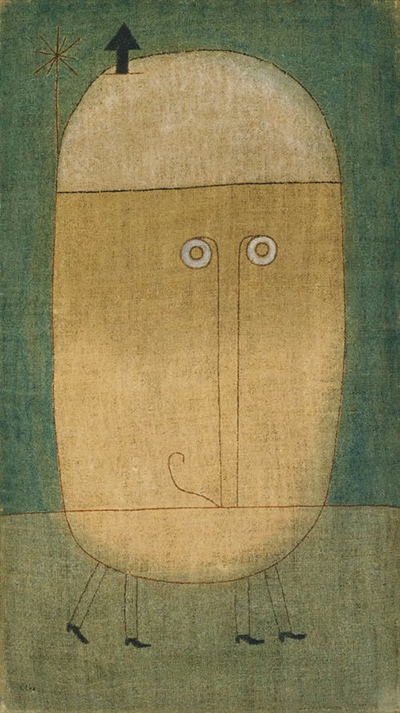Mask of Fear combines primitivism and surrealism, providing a satirical message
The Mask of Fear was painted in 1932 as an oil on burlap, just before Adolph Hitler came to power in Germany.
This satirical painting shows Paul Klee's talent for blending abstract and schematic art in a simplistic but effective way.
The image also reveals Klee's inner state of mind - fear, not only for the future of Germany but for the future of art too.
Klee was interested in both primitive folk-art and children's art. Interestingly, the similarities between this painting and a tribal Zuni wooden sculpture "Ahayu:da" (War God) have been well documented.
Klee would have seen this sculpture many times on display in an ethnological museum in Germany. Klee's painting and the wooden War God sculpture were both shown in the 1984 exhibition titled "Primitivism" in 20th Century Art: Affinity of the Tribal and the Modern.
The curator of the exhibition, William Rubin, described Klee's painting as a "modern transformation of the sculpture". The "striking similarities" identified by Rubin include the arrow, the lack of a mouth, line on the forehead and the overall shape of the head and nose.
Rubin felt that the two sets of legs represented feathers on the sculpture but other interpretations suggest that the legs represent people hiding in fear.
The use of burlap for the original painting may have also been significant. It would have drawn the viewer in for closer inspection of the material and texture.
Within a year of this painting, Klee's art had been termed 'degenerate' by Hitler and Klee's fears for the future had been realized. Fortunately, this striking piece of Paul Klee's artwork will continue to provoke discussion and debate.




